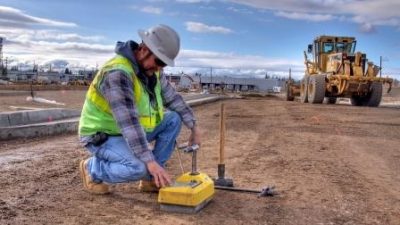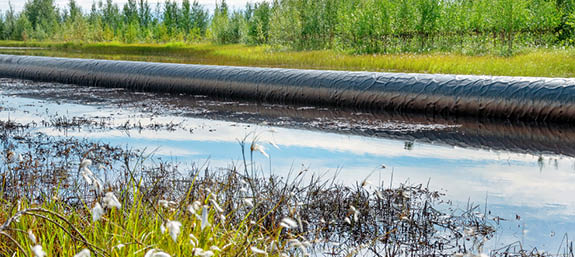Groundwater remediation techniques span biological, chemical, and physical treatment technologies. Most groundwater treatment techniques utilize a combination of technologies. Some of the biological treatment techniques include bioaugmentation, bioventing, biosparging, bioslurping, and phytoremediation. Some chemical treatment techniques include ozone and oxygen gas injection, chemical precipitation, membrane separation, ion exchange, carbon absorption, aqueous chemical oxidation, and surfactant enhanced recovery. Some chemical techniques may be implemented using nanomaterials. Physical treatment techniques include, but are not limited to, pump and treat, air sparging, and dual phase extraction.
Biological treatment technologies
Bioaugmentation
If a treatability study shows no degradation (or an extended lab period before significant degradation is achieved) in contamination contained in the groundwater, then inoculation with strains known to be capable of degrading the contaminants may be helpful. This process increases the reactive enzyme concentration within the bioremediation system and subsequently may increase contaminant degradation rates over the nonaugmented rates, at least initially after inoculation.
Bioventing
Bioventing is an on-site remediation technology that uses microorganisms to biodegrade organic constituents in the groundwater system. Bioventing enhances the activity of indigenous bacteria and archaea and stimulates the natural in situ biodegradation of hydrocarbons by inducing air or oxygen flow into the unsaturated zone and, if necessary, by adding nutrients. During bioventing, oxygen may be supplied through direct air injection into residual contamination in soil. Bioventing primarily assists in the degradation of adsorbed fuel residuals but also assists in the degradation of volatile organic compounds (VOCs) as vapors move slowly through biologically active soil.
Biosparging
Biosparging is an in situ remediation technology that uses indigenous microorganisms to biodegrade organic constituents in the saturated zone. In biosparging, air (or oxygen) and nutrients (if needed) are injected into the saturated zone to increase the biological activity of the indigenous microorganisms. Biosparging can be used to reduce concentrations of petroleum constituents that are dissolved in groundwater, adsorbed to soil below the water table, and within the capillary fringe.
Bioslurping
Bioslurping combines elements of bioventing and vacuum-enhanced pumping of free-product that is lighter than water (light non-aqueous phase liquid or LNAPL) to recover free-product from the groundwater and soil and to bioremediate soils. The bioslurper system uses a “slurp” tube that extends into the free-product layer. Much like a straw in a glass draws liquid, the pump draws liquid (including free-product) and soil gas up the tube in the same process stream. Pumping lifts LNAPLs, such as oil, off the top of the water table and from the capillary fringe (i.e., an area just above the saturated zone, where water is held in place by capillary forces). The LNAPL is brought to the surface, where it is separated from water and air. The biological processes in the term “bioslurping” refer to aerobic biological degradation of the hydrocarbons when air is introduced into the unsaturated zone contaminated soil.
Phytoremediation
In the phytoremediation process, certain plants and trees are planted, whose roots absorb contaminants from groundwater over time. This process can be carried out in areas where the roots can tap the groundwater. A few examples of plants that are used in this process are Chinese Ladder fern Pteris vittata, also known as the brake fern, which is a highly efficient accumulator of arsenic. Genetically altered cottonwood trees are good absorbers of mercury and transgenic Indian mustard plants soak up selenium well.


